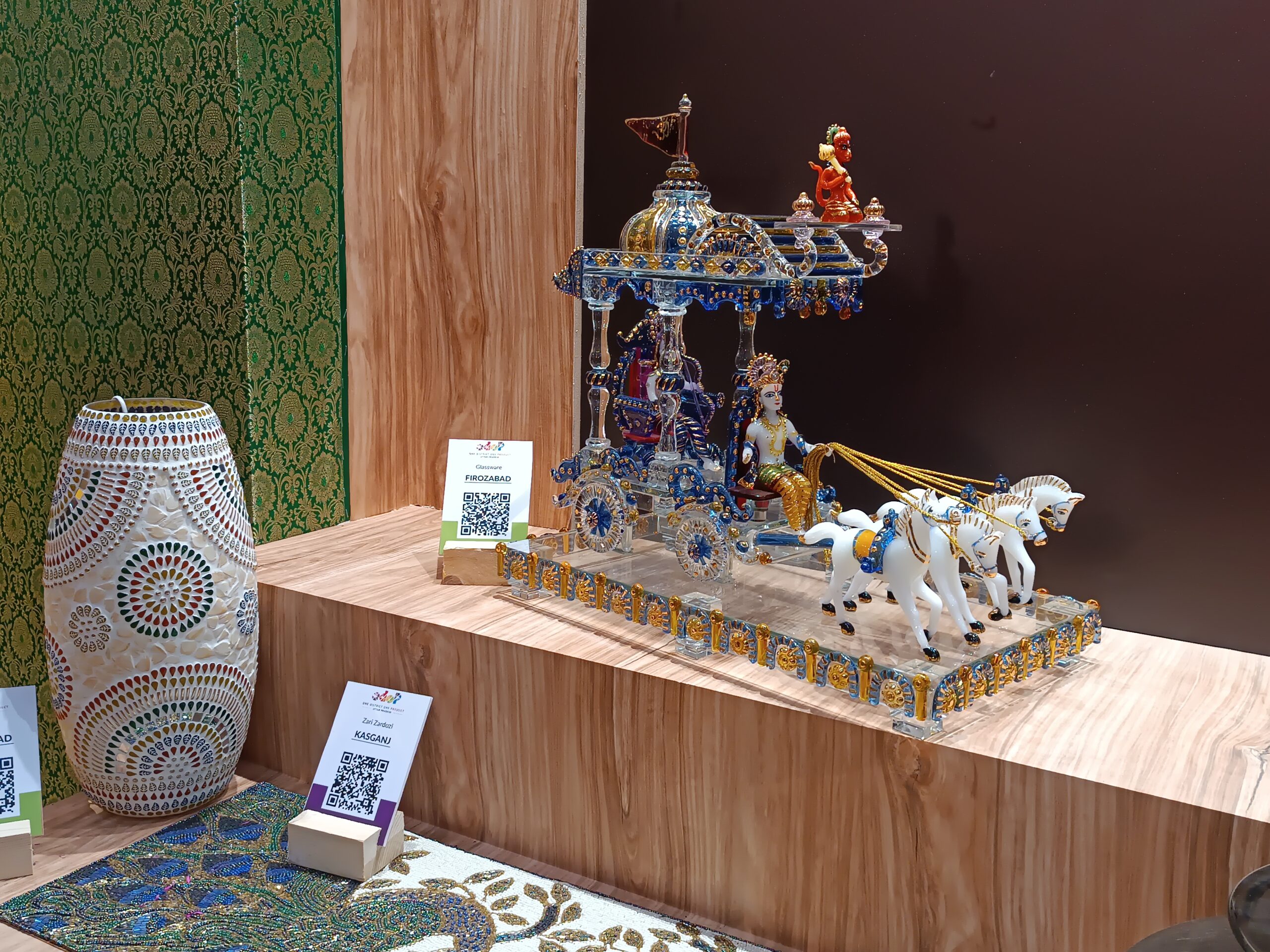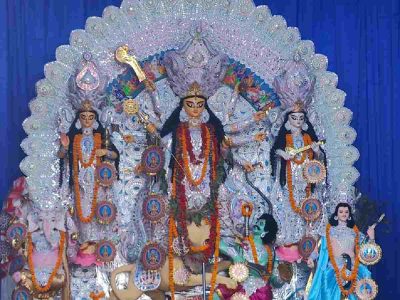Artisans from diverse backgrounds and regions of Uttar Pradesh stole the spotlight at a recent international trade show held in Greater Noida as part of the ‘One District One Product (ODOP)’ initiative.
The event, hosted at the India Expo Mart and Centre, featured numerous craftsmen with their finest works.
Dilshad Hussain, a brass metal craftsman and Padma Shri Award winner from Moradabad, a region renowned for its thriving brass industry, shared his passion for the craft.
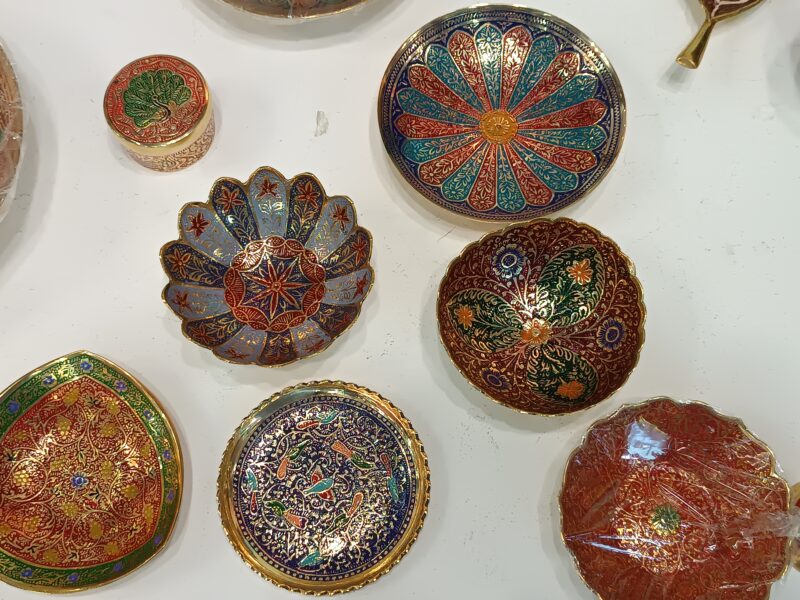
“I have been doing it since childhood. My family has been doing it for generations. Such exhibitions are a great platform to showcase our hard work,” he noted.
Reflecting on his journey from childhood curiosity to a lifelong passion, Hussain highlighted how his dedication earned him numerous national awards and the prestigious Shilp Guru Award.
Hussain’s workshop in Moradabad is a testament to the rich heritage of brass metal-work in the region. The town has long been a hub for skilled artisans who transform sheets of brass into exquisite pieces of art. From intricately-designed utensils to ornate sculptures, Moradabad’s craftsmen have a deep connection with their work, often handed down through generations. Each of the brass wonders in his workshop tell a story of tradition and craftsmanship.
The exhibition also featured Gulabi Meenakari artisans like Tarun Kumar Singh, who elaborated on this exquisite art form.
“Meenakari is done in different ways in different cities. But it was in Benaras (Varanasi) where ‘Gulabi’ Meenakari was invented. Its colours are formed by metal oxides such as blue from cobalt, white from titanium, green from copper, brown due to magnesium, and pink due to gold. All of these colours emerge after the oxidation process,” explained Singh.
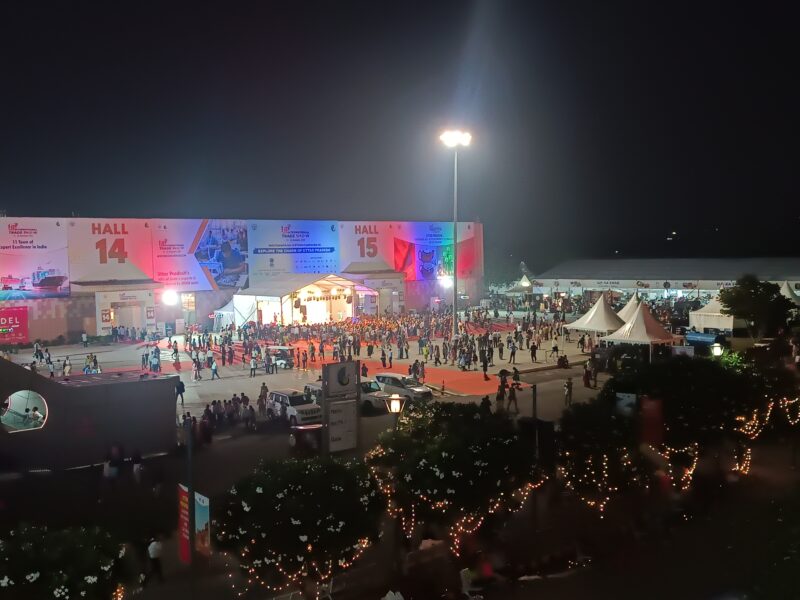
In this art form, metal surfaces are adorned by attaching or fusing different mineral substances onto them.
Singh, a Varanasi native, broke down the process.
“First, we create the design, then we apply a layer of pure silver. The third step involves engraving, and the fourth is Meenakari, where we heat the object to 850 degrees Celsius before painting it.”
Meenakari is not just a craft; it’s a tradition that has been passed down through generations.
Singh, like many others in Varanasi, learned the art from his family. His father, a Meenakari artist himself, introduced him to the world of vibrant colours and intricate designs. Today, Tarun is not only a skilled artisan but also a recipient of the prestigious National Award, recognising his contribution to preserving and advancing this ancient art form.
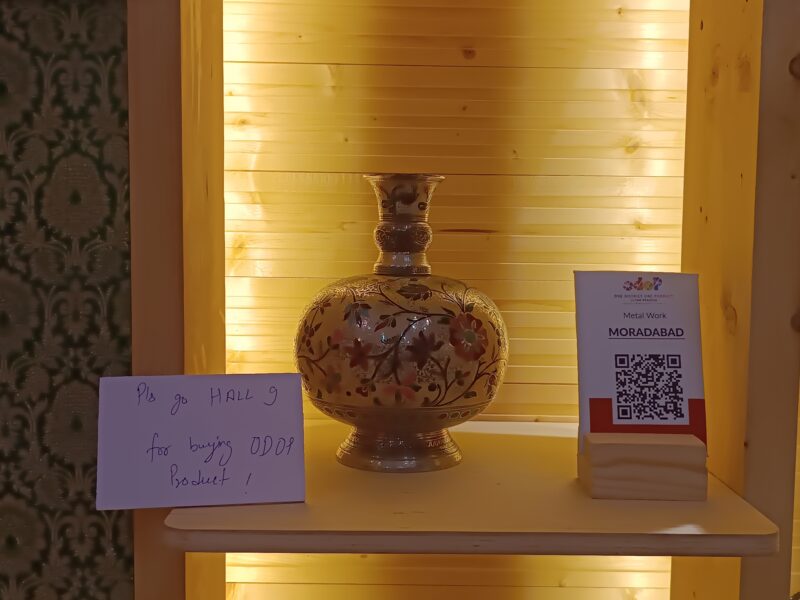
The exhibition encompassed a wide array of crafts and artisans, including glassware from Firozabad, marble stone inlay work from Agra, and even Desawari paan (betel quid) from Mahoba, drawing visitors from Delhi, Noida, and Greater Noida.
The event celebrated ODOP (One District One Product), GI-Tag products, and numerous other creations from Uttar Pradesh, poised for global recognition.
Notably, the scent of Kannauj, brass metal-work from Moradabad, and Mahoba’s Desawari paan emerged as crowd favourites. Despite being relatively expensive due to the use of silver, Varanasi’s Meenakari art also garnered appreciation for its intricate process.
Singh shed light on its history, stating, “Meenakari found its way to India from Persia during the 17th century. ‘Gulabi’ Meenakari, with its vivid colours formed by metal oxides, is a speciality of Benaras.”
Beyond decorative items, Desawari paan captured attention, with visitors flocking to taste the authentic and freshly plucked leaves from the betel vineyard of Ram Prakash Chaurasia, a 50-year-old betel leaf farmer from Mahoba.
Chaurasia explained, “The Desawari betel leaves are known for their sweet taste and delicate textures. The leaf melts as soon as you put it in your mouth.”
His dedication, along with that of other farmers from Mahoba, earned this indigenous betel leaf variety a GI (Geographical Indicator) tag in 2021.
Chaurasia’s journey to preserving this unique variety of betel leaves is a testament to the passion and dedication of farmers across Uttar Pradesh. He shared stories of generations of betel leaf cultivators, with each farmer adding their touch to the legacy.
The GI tag not only recognises the distinct qualities of Mahoba’s betel leaves but also helps protect the livelihoods of the local farming community.
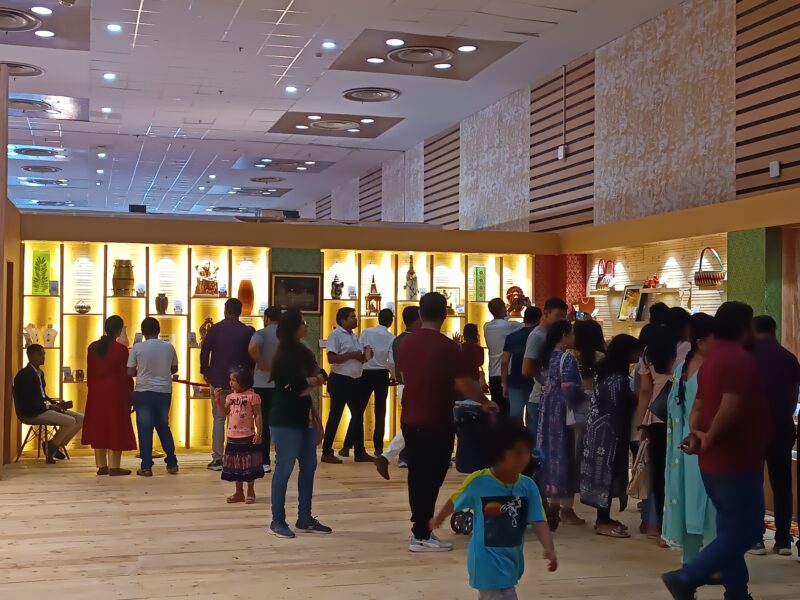
As the exhibition drew to a close, visitors left with not just beautifully crafted artifacts but also a deeper appreciation for the rich traditions and craftsmanship of Uttar Pradesh.
The ‘One District One Product’ initiative has not only provided a platform for artisans to showcase their work but has also ignited a renewed interest in preserving and celebrating the cultural heritage of the region.
It further solidified Uttar Pradesh’s place as a hub of artistic excellence.

